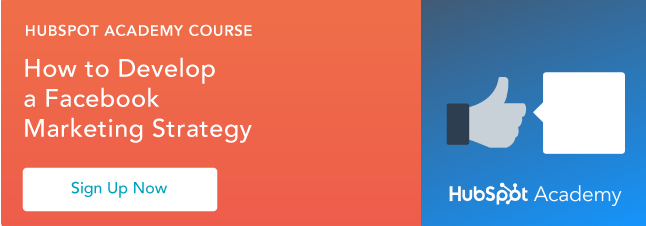Let’s face it: the way people are using and interacting with Facebook is shifting. The same can be said for businesses, too.
In the past, businesses looking to market using Facebook had one major tool at their disposal — their Facebook Page. In fact, for a long time, Pages were the reason many businesses joined Facebook in the first place.
Facebook is a very different place compared to when it first entered the marketing scene. Organic reach is harder to come by, advertising is more important than ever, the amount of competition is overwhelming, and the more traditional tactics — like posting frequently or asking users to like or share your content — don’t seem to work anymore.
However, it’s not all doom and gloom. There is another tool marketers have at their disposal: Facebook Groups.
Groups are nothing new to the marketing world, but they present a variety of interesting business opportunities. They are an excellent place for two-way communication between businesses and their customers. And if a Group is public, it’s a great place for prospects, too.
Ultimately, Groups give businesses the chance to engage with their audience in a more meaningful and authentic way than they ever could using their Page.
So, we took some time and scoured the web to find businesses who do a really good job at utilizing Groups to engage and delight their customers, and prospects too, in new and exciting ways. Here are nine Facebook Groups that are crushing it to help inspire your future Facebook marketing strategy.
1. Instant Pot
Members: 2.5 million
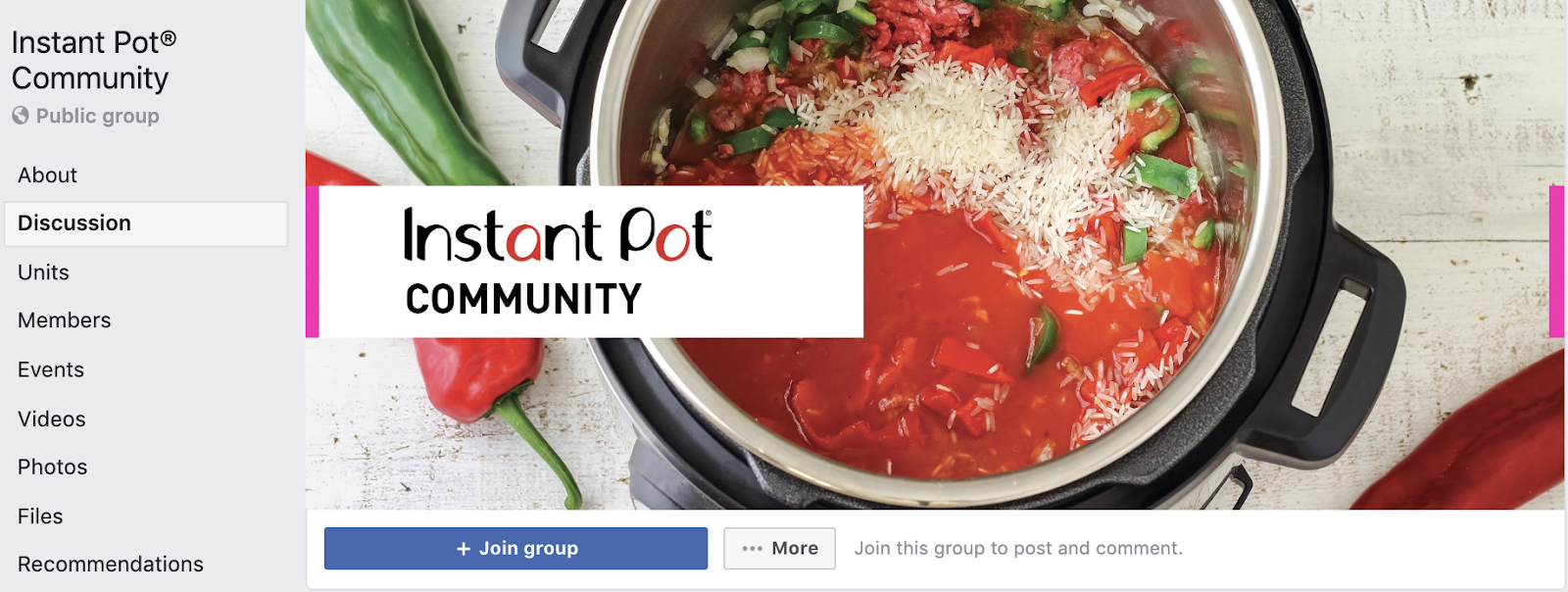
While the Instant Pot Facebook Page has a follower count of about 267,000, their Group — Instant Pot Community — has a whopping 2.5 million members.
The Group sees about 10,000 posts every 30 days. Talk about a high level of engagement! The popular electric cooker brand uses its group to create a space where the international community of Instant Pot users can ask questions, post unique recipes, and share the joy of cooking with their products.
They also offer limited trouble-shooting in the case that any customers experience any issues or have product-specific questions. They rarely ever promote their products within the Group, outside of the occasional giveaway where members can enter to win prizes to use with their Instant Pot.
This is a great example of a brand using Facebook Groups to create an environment where members who share a common interest — in this case, cooking with the Instant Pot — can interact and engage.
2. Gold’s Gym
Members: 6,000
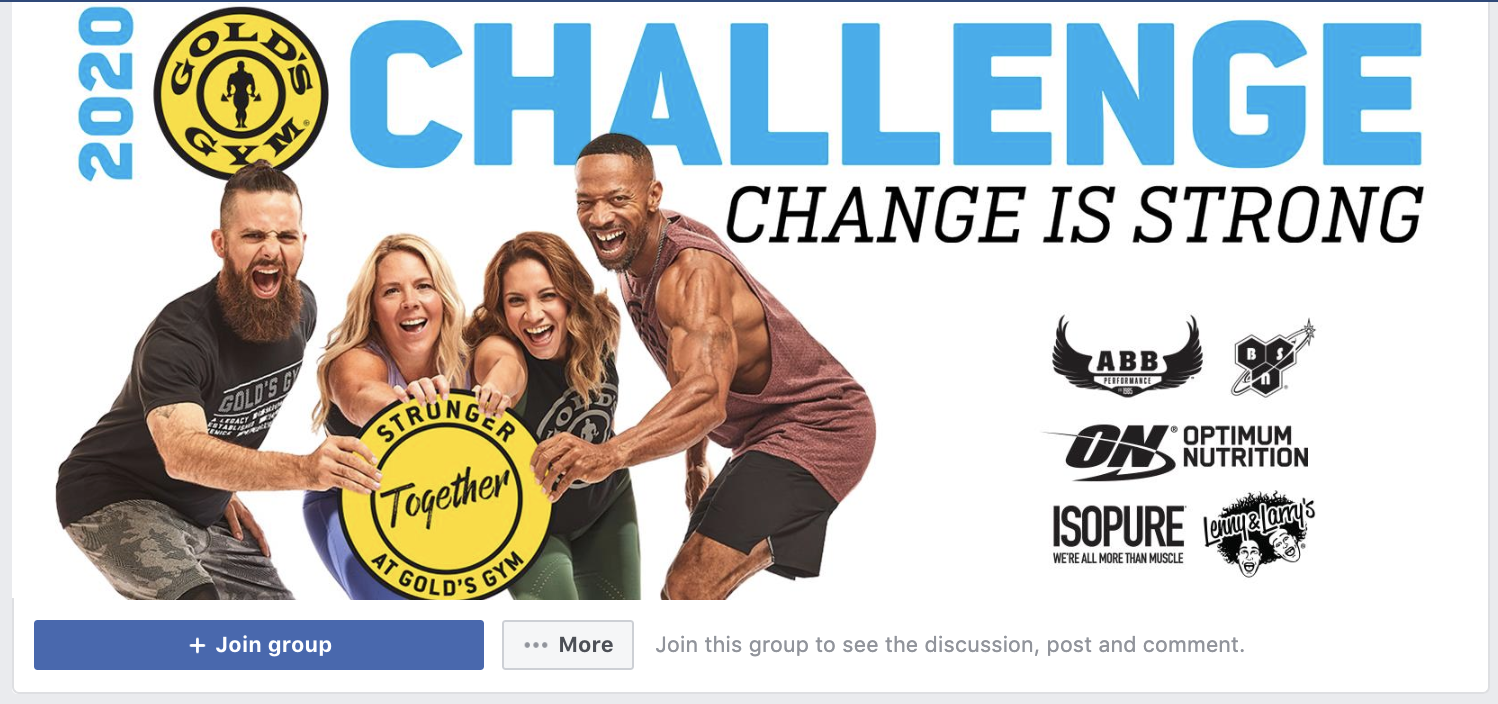
Every year, Gold’s Gym hosts The Gold’s Gym Challenge where members sign-up for a 12-week fitness program. Instead of just offering a unique training program, Gold’s Gym took it a step further. They used Facebook Groups to create a space where current, and past, members can share their progress on their 12-week challenge, find support, and document their journey.
If you’ve ever attempted any sort of fitness challenge, you know how meaningful and important support from people in the same program or challenge can be.
3. National Geographic
Members: 66,000
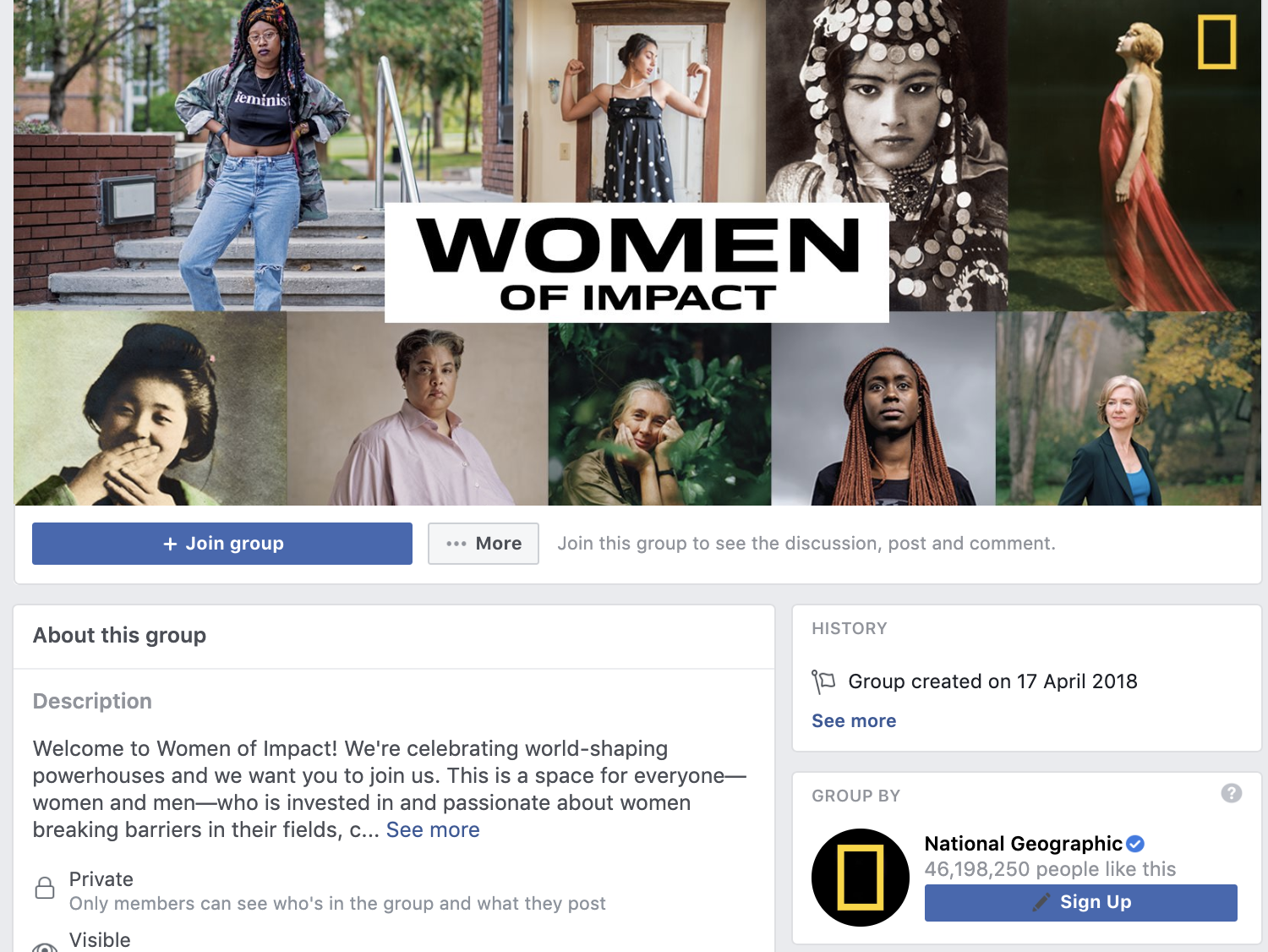
When it comes to the art of inspiring and being a voice for change, there are very few who do it quite as well as National Geographic. Their group, Women of Impact, focuses on “celebrating world-shaping powerhouses” and encourages anyone who is passionate about women breaking barriers in their fields to join.
A group doesn’t always need to be directly related to products or services and this is a great example — National Geographic originally started out as a magazine. The publication uses Facebook Groups to connect with an audience that deeply aligns with issues and initiatives the brand also cares deeply about.
4. Elementor
Members: 57,089
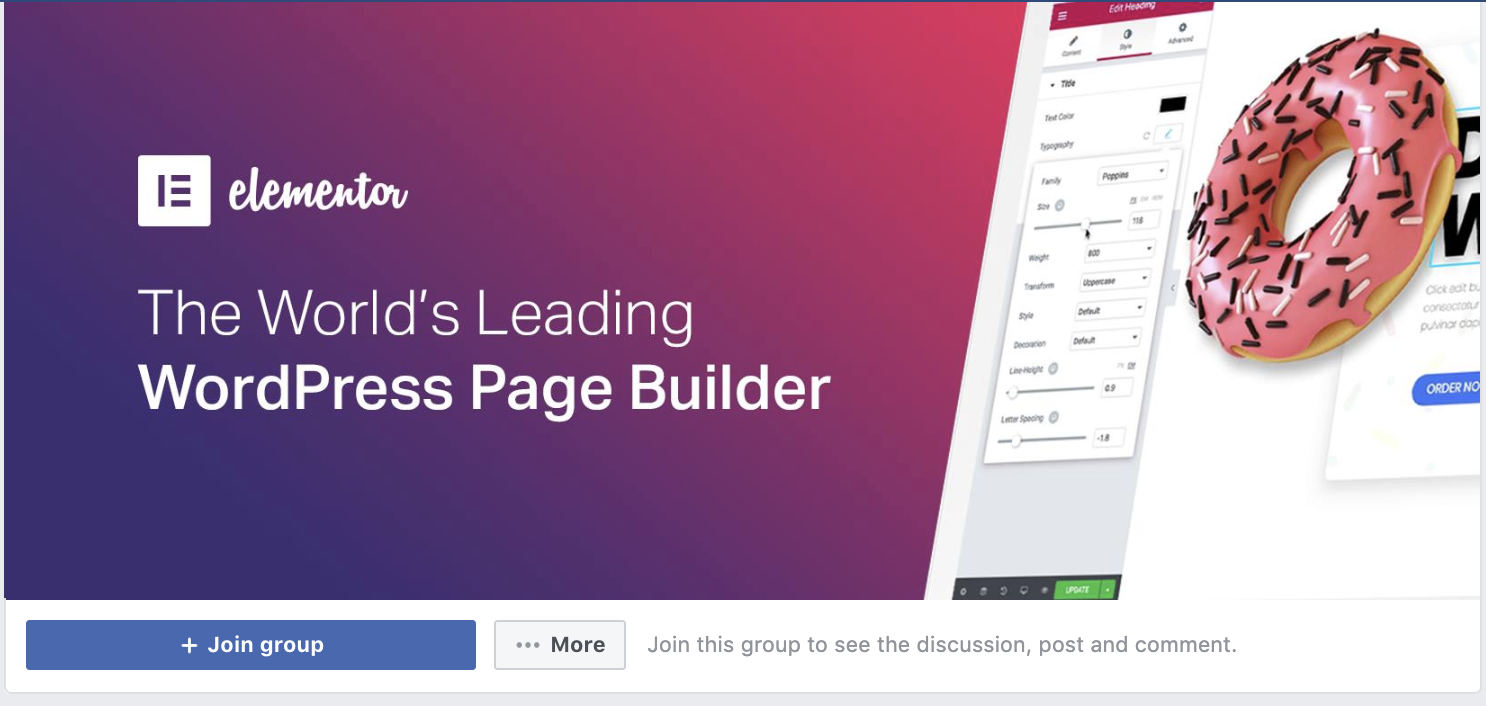
Elementor, a WordPress page builder plugin, has a Facebook group that consists of just over 50,000 members. Where they really excel, however, is using their group to drive engagement. On average, the group sees over 4,000 posts every month. 4,000! Let that sink in for a second. That level of engagement is unheard of on a business Page.
And when it comes to engagement, not only do Groups beat out Pages, but Facebook prioritizes Group content over Pages.
5. Peloton
Members: 245,000
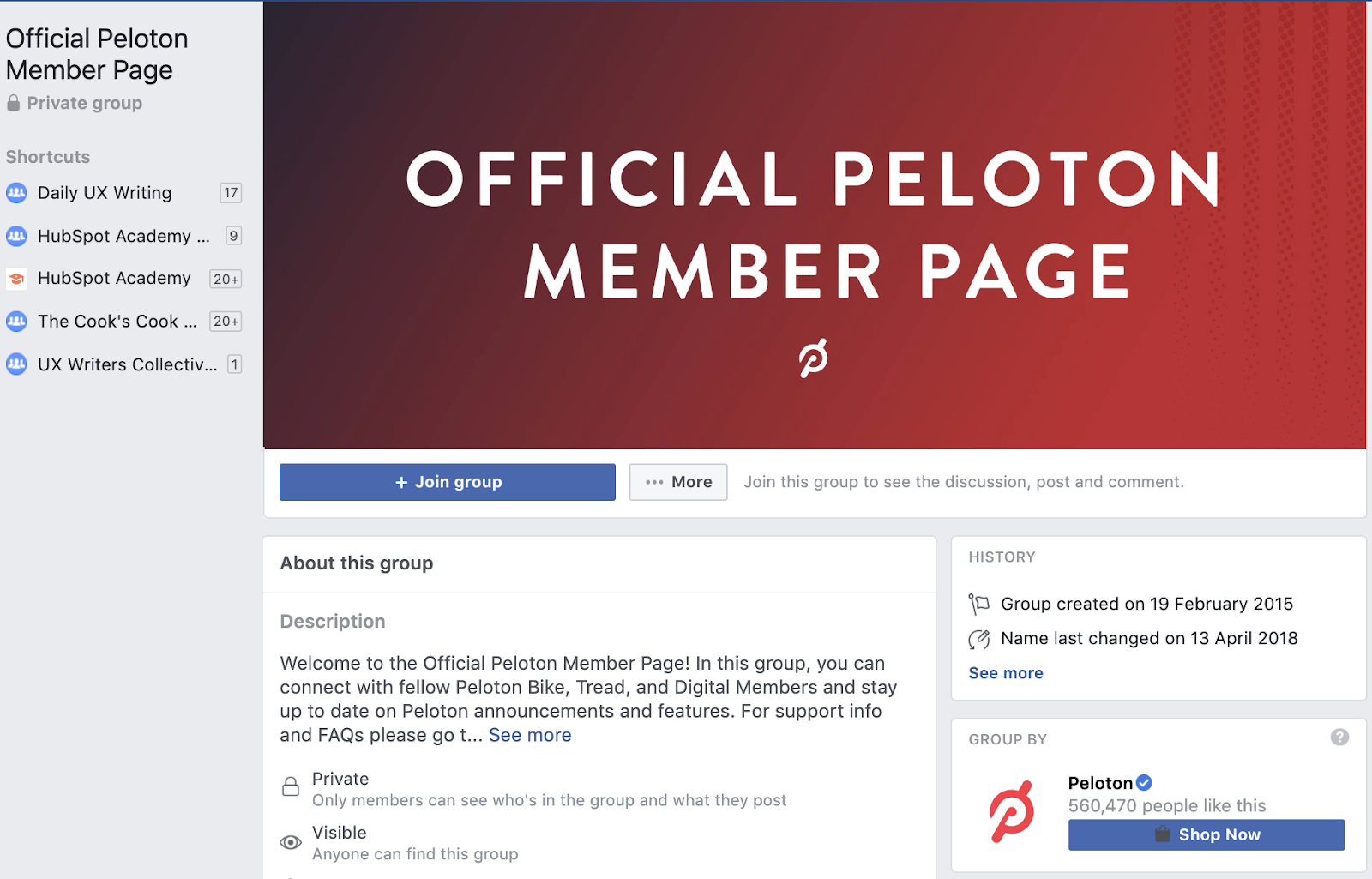
Similarly to Instant Pot, Peloton — an American company that makes high-end exercise equipment and hosts virtual fitness classes — created the Official Peloton Member private group where anyone who owns one of their products can connect and network with others who have Peloton’s products, too. And when it comes to exercise, this type of network or group provides value to its members as they’re able to share exercise plans, techniques, schedules, and training methods with one another.
Like some of the other groups in this list, Peloton created a private community, meaning members need to request access. This is a good tactic when you’re trying to create an exclusive experience for customers or members who are invested in your product. The exclusive community adds an element of value to their experience.
6. MobileMonkey
Members: 32,403
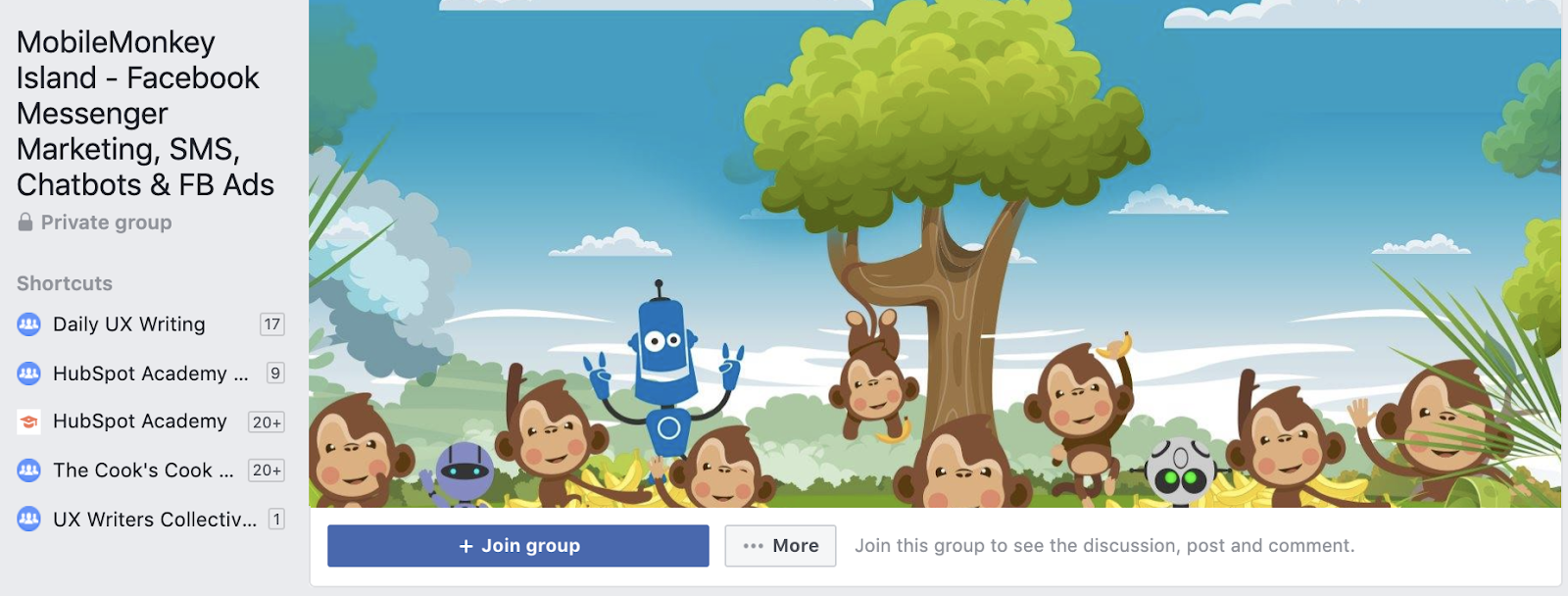
Here’s an example of a company whose reach potential for their Group far surpasses that of their Page. MobileMonkey’s business Page only has 6,000 followers. Their Facebook Group, however, has a staggering 32,400 members. Their Group — MobileMonkey Island — is product-specific and provides an environment where members can ask questions and share knowledge about Facebook Messenger, chatbot marketing, and advanced Facebook Ads with MobileMonkey.
Instead of creating, or even building, a separate community, MobileMonkey does a really great job at meeting their users where they’re already active — on social media.
7. HubSpot Academy
Members: 7,000
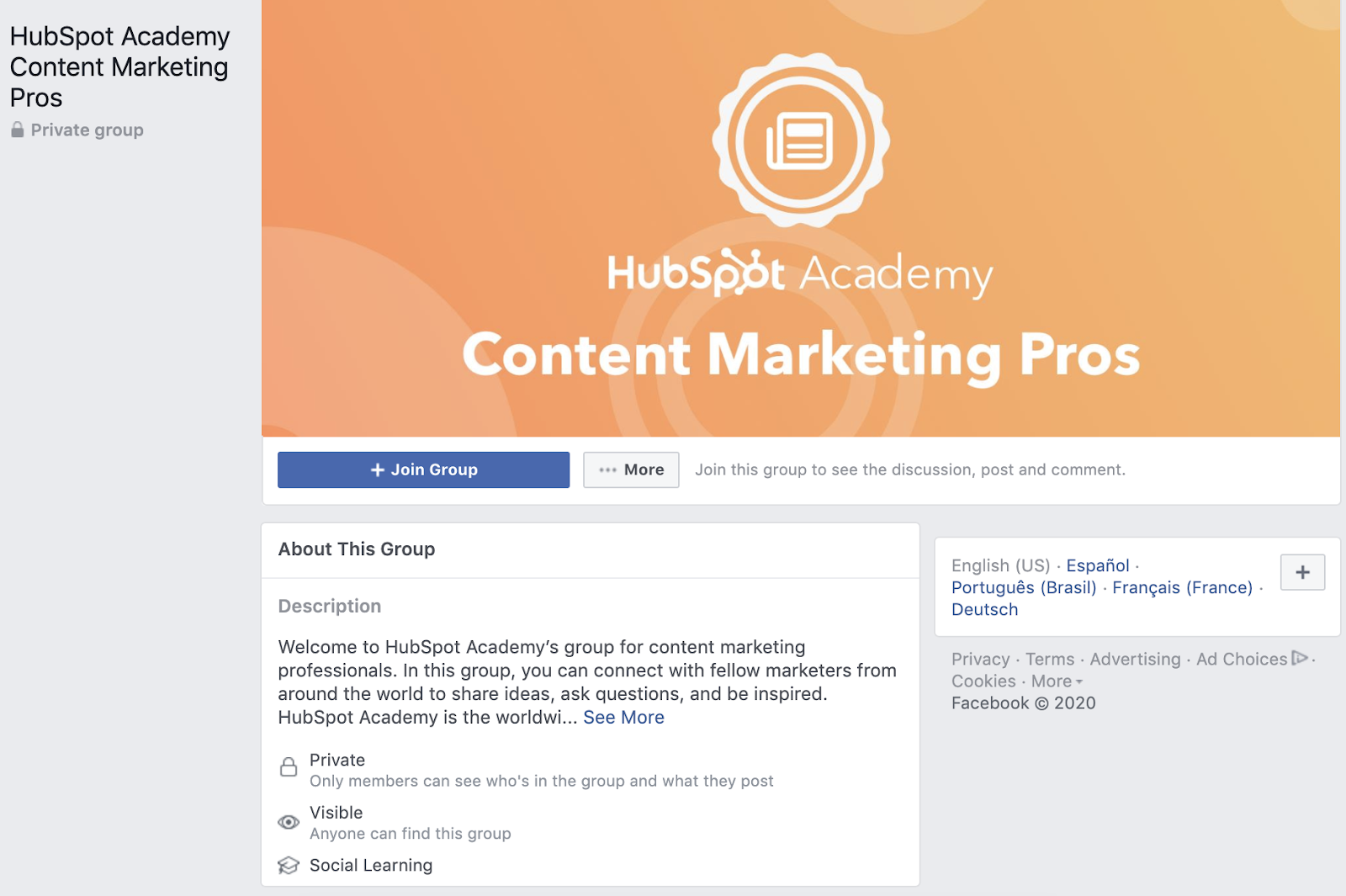
Okay — shameless-plug, we know — but there are a few reasons why HubSpot Academy’s Content Marketing Pros Group makes the list. It is a closed group, so members need to request to be a part of it. Once in the group, members can share ideas about content challenges, projects they’re working on, and even share ideas for courses they would like to see HubSpot Academy produce in the future.
It’s a great example of how you can invite your customers to be a part of the process, and show them that you value their feedback and input. This type of group works especially well for B2B businesses.
8. Canva
Members: 10,000
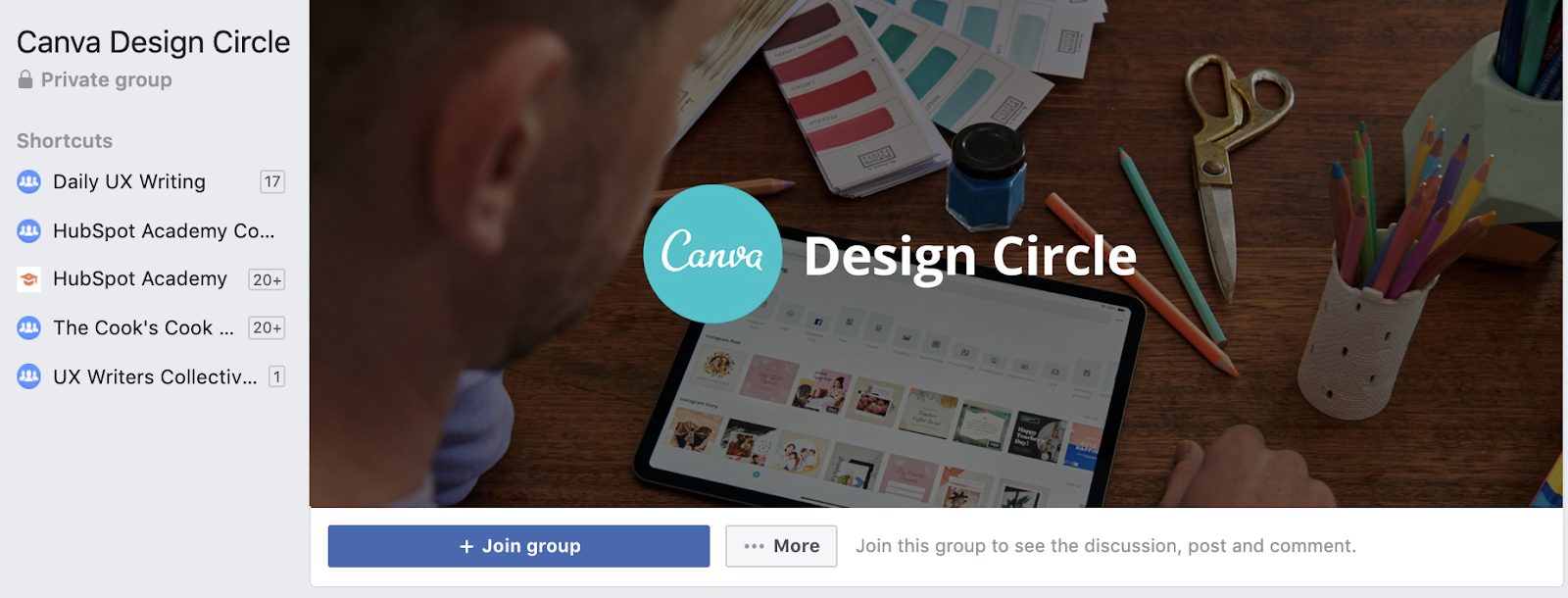
Like MobileMonkey, Canva’s Group — Canva Design Circle — is product-specific where members can make the most out of their tool through Canva’s Design School. They can also get the latest updates, tips, and insights directly from the Canva team. This is a great example of a company using Groups to help members navigate their product in a larger community with other members who might be sharing similar challenges.
9. Tasty
Members: 47, 000
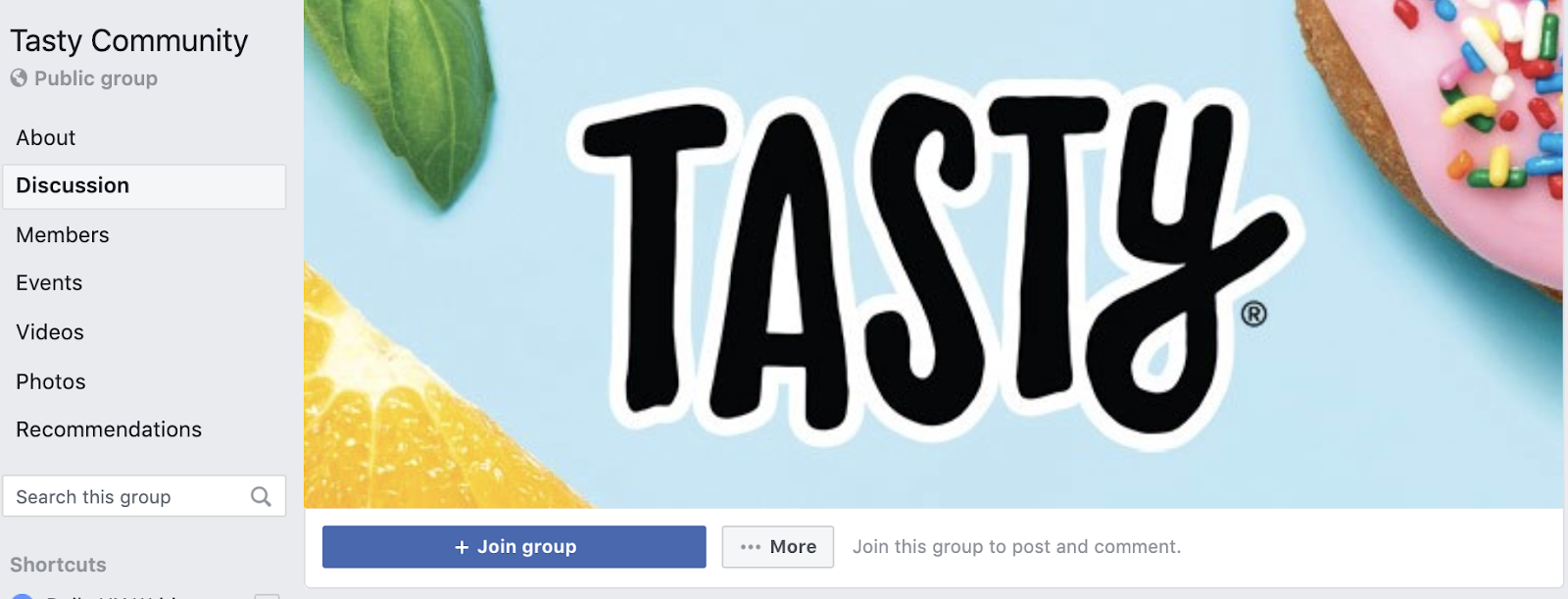
Tasty calls it’s public group, the Tasty Community, a Global Potluck. The group connects a global community of people who share a common interest — a love for Tasty and food. Members share recipes, ideas for substitutes, and cooking tips.
The group drives engagement by encouraging its members to share their recipes and stand a chance of having that recipe featured on their website, Tasty.co. By creating these competitions or incentives they’re encouraging members to participate in the community and connect with other members.
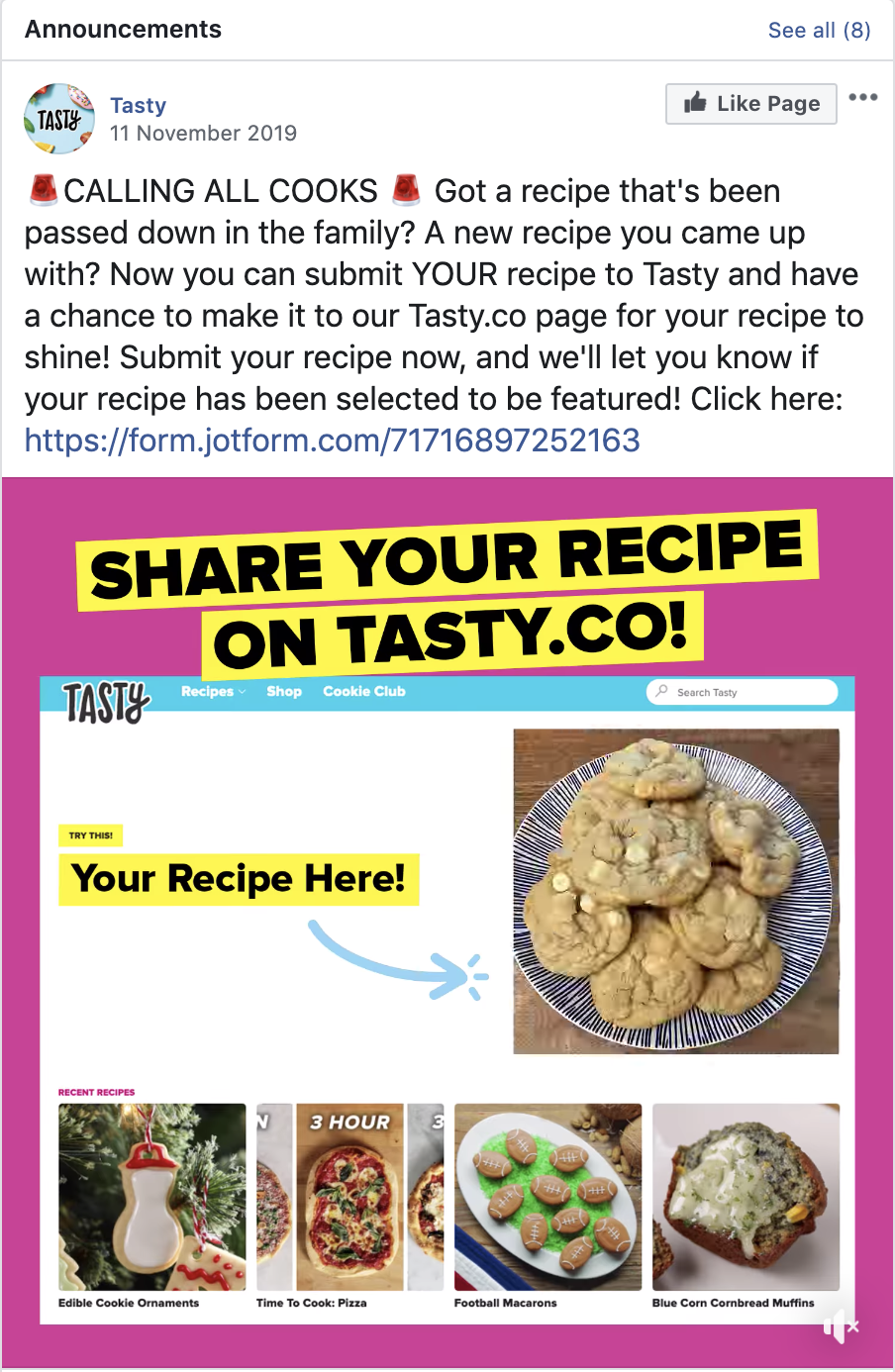
When you’re thinking about how you can incorporate Groups as a part of your Facebook strategy, remember to think of it as an additional resource that you’re providing to your customers and prospects.
If you’d like to learn more about how you can use Groups as a part of your Facebook Marketing Strategy, check out HubSpot Academy’s new Facebook Marketing Course.
